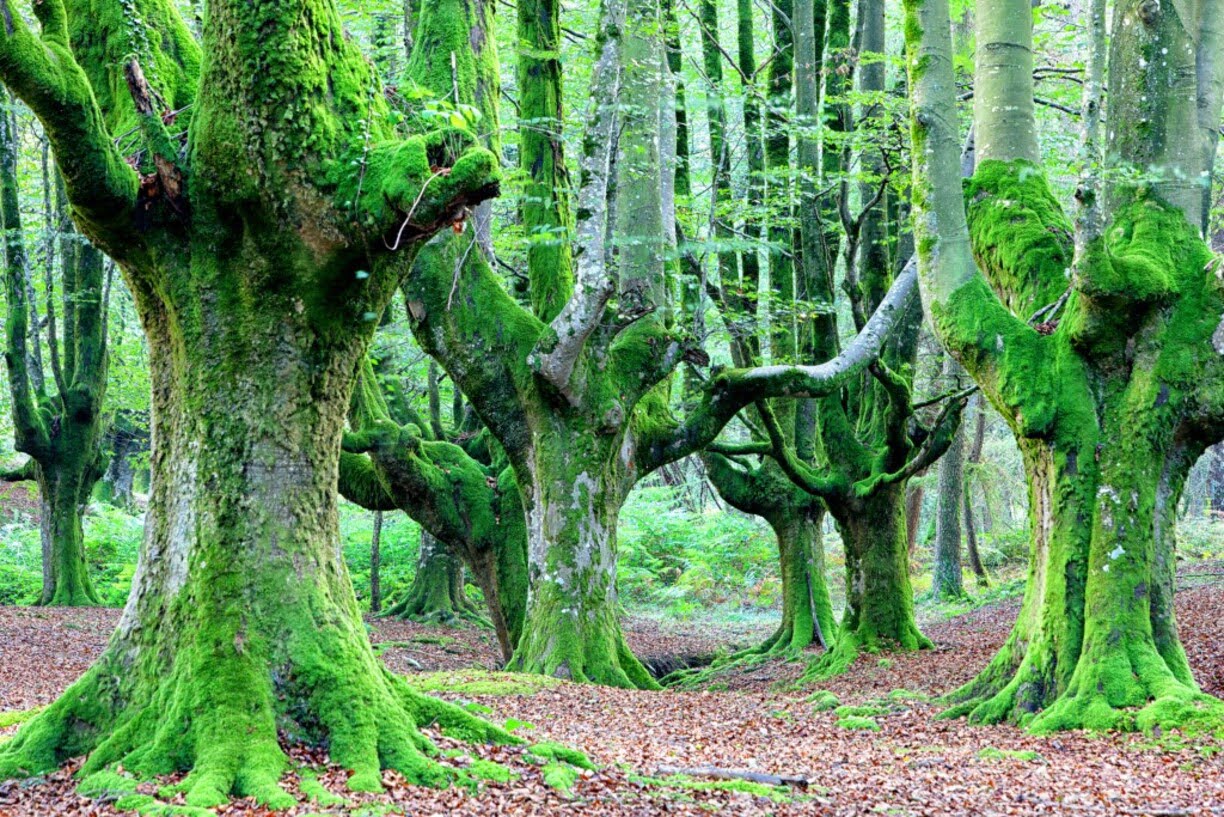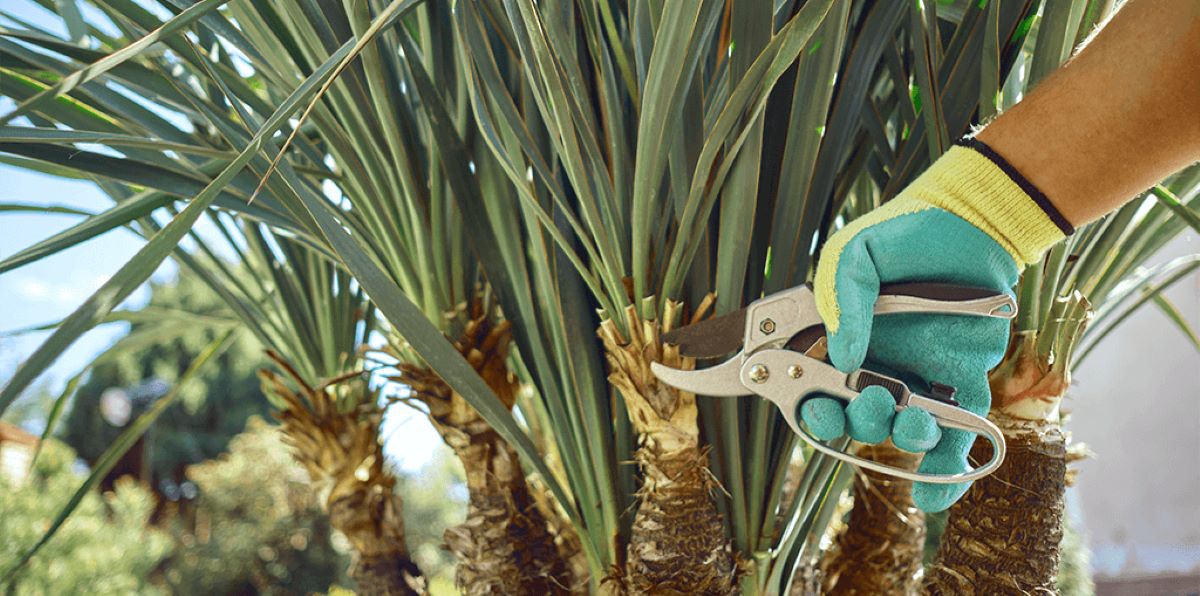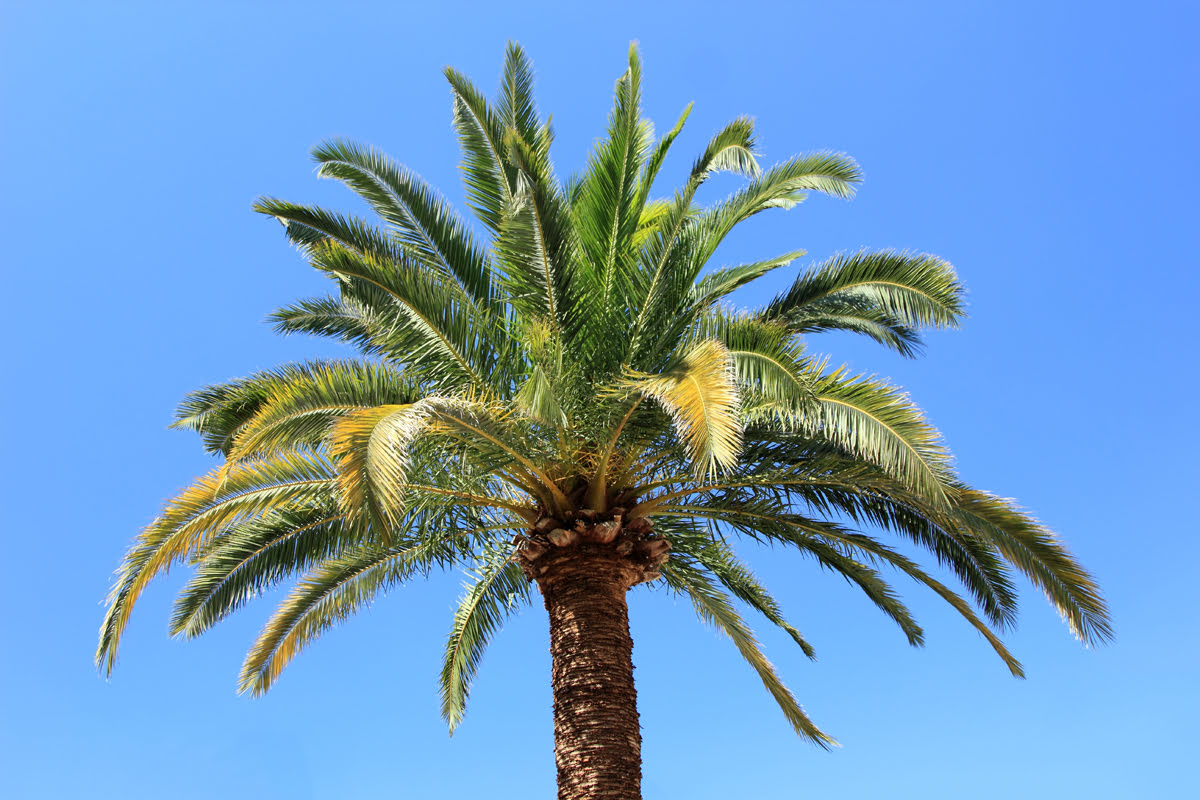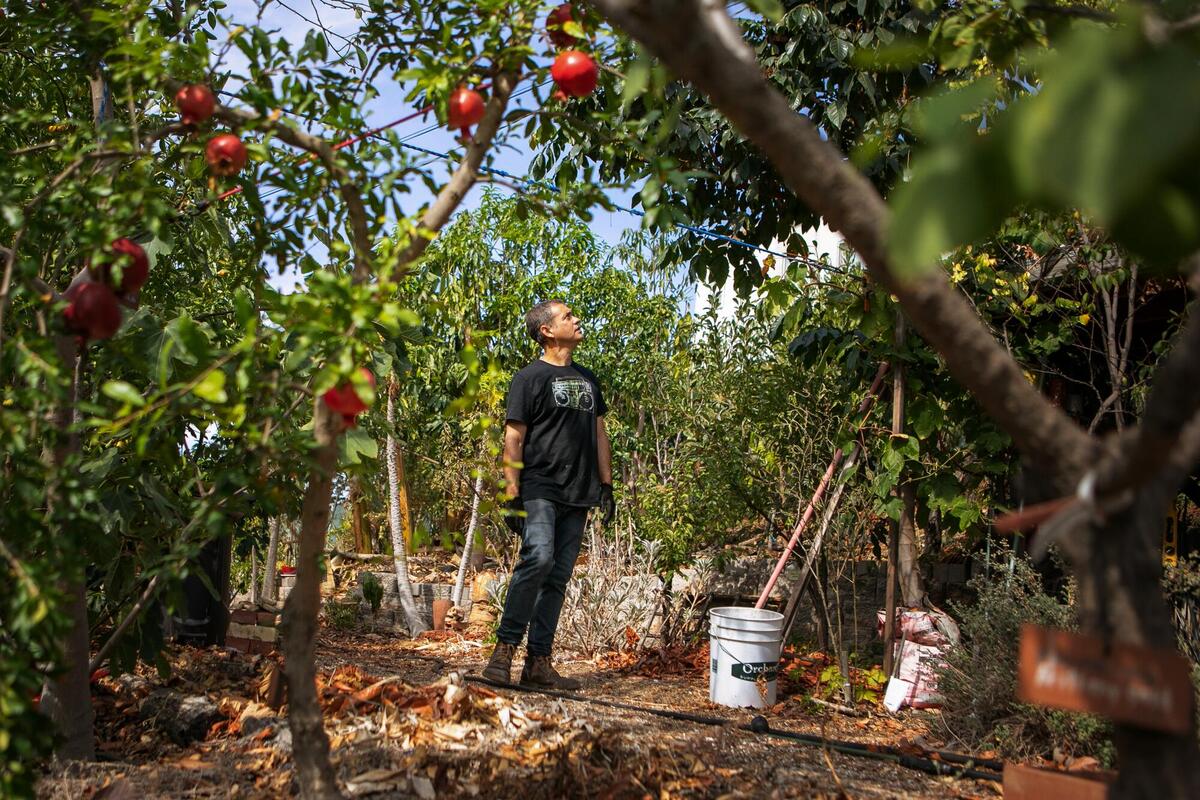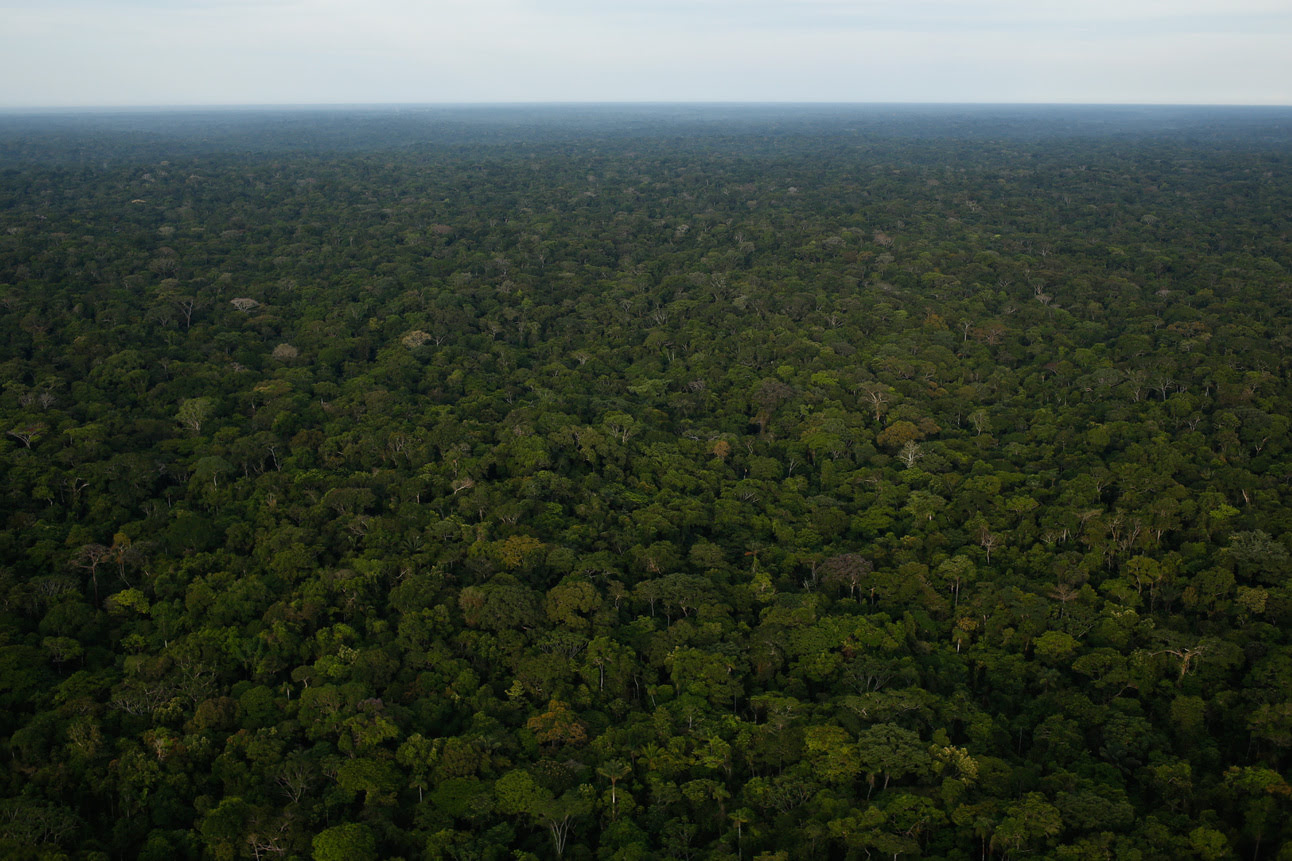Home>Gardening News and Trends>Latest News>How Many Different Palm Trees Are There


Latest News
How Many Different Palm Trees Are There
Modified: February 9, 2024
Discover the latest news and learn about the fascinating variety of palm trees with our comprehensive guide. Find out how many different palm tree species exist and where they are found.
(Many of the links in this article redirect to a specific reviewed product. Your purchase of these products through affiliate links helps to generate commission for Chicagolandgardening.com, at no extra cost. Learn more)
Table of Contents
Introduction
Palm trees are not only iconic symbols of tropical destinations but a diverse group of plants that can be found in various regions around the world. With their towering heights, lush green leaves, and distinctive appearance, palm trees bring a sense of tranquility and beauty to any landscape. But have you ever wondered just how many different types of palm trees there are?
The number of different palm tree species is quite vast, with estimates ranging from 2,500 to 3,000 different varieties. This incredible diversity is due to several factors, including geographical distribution, growth requirements, and variations in appearance. Each palm tree species has its own unique characteristics, making them incredibly fascinating to study and appreciate.
In this article, we will explore the various factors that contribute to the number of different palm trees, as well as delve into the classification of palm trees based on appearance, habitat, and growth requirements. We will also highlight some popular palm tree species and discuss the ongoing conservation efforts to protect these remarkable plants.
So, let’s dive in and discover the captivating world of palm trees, as we unravel the mystery of just how many different types there really are.
Factors that Determine the Number of Different Palm Trees
The incredibly diverse range of palm tree species can be attributed to several key factors that contribute to their variation and abundance. These factors include geographical distribution, growth requirements, and genetic mutations. Let’s explore each of these factors in more detail.
Geographical Distribution
Palm trees are found in various parts of the world, from tropical rainforests to arid deserts. Their distribution is primarily determined by climatic conditions, including temperature, rainfall, and soil type. Different regions offer unique environmental conditions that influence the adaptation and evolution of palm trees, resulting in a wide range of species.
Growth Requirements
Another factor that contributes to the number of palm tree species is their specific growth requirements. Each species has its own preferences for sunlight exposure, soil moisture, and nutrient levels. Some palm trees thrive in coastal areas, while others prefer the shade of a dense forest. These specific requirements create distinct habitats for different species, leading to a greater diversity among palm trees.
Genetic Mutations
Genetic mutations play a crucial role in the evolution and development of new palm tree species. These mutations can occur naturally or as a result of human intervention, such as selective breeding. Mutations can lead to variations in leaf shape, color, size, and growth patterns, resulting in the emergence of new palm tree species over time.
Differentiation in Adaptation
Palm trees have evolved over millions of years to adapt to various environmental conditions. Some species have developed unique characteristics to survive in harsh desert climates, such as long taproots to access underground water sources. Others have adapted to the competition for sunlight in dense rainforests by growing taller and developing large leaves to capture sunlight. These adaptations have led to a wide array of palm tree species that have successfully occupied different ecological niches.
Overall, the number of different palm tree species is shaped by a combination of geographical distribution, growth requirements, genetic mutations, and differentiation in adaptation. This incredible diversity is what makes palm trees such fascinating and beautiful plants to study and admire.
Classification of Palm Trees Based on Appearance
Palm trees display a wide range of appearances, with distinct features that set each species apart. Their classification based on appearance is a useful way to categorize and identify different palm tree varieties. Let’s explore some common classifications based on appearance:
Fan Palms
Fan palms are characterized by their large, fan-shaped leaves that radiate from a central point. These leaves can be either divided, like fingers, or undivided, with a single leaf blade. Fan palms are often associated with tropical regions and are commonly seen in landscapes and gardens due to their attractive foliage. Some popular examples of fan palms include the Mexican fan palm (Washingtonia robusta) and the Mediterranean fan palm (Chamaerops humilis).
Feather Palms
Feather palms are known for their highly divided leaves resembling feathers, giving them a feathery appearance. The leaflets are arranged along the leaf stem in a feather-like pattern, creating a distinct and elegant look. These palm trees are typically found in tropical and subtropical regions. The Queen palm (Syagrus romanzoffiana) and the Majesty palm (Ravenea rivularis) are well-known examples of feather palms.
Trunk Characteristics
Another classification criterion for palm trees is based on their trunk characteristics. Some palm trees have smooth, slender trunks with no visible markings, while others have rough, textured trunks with prominent patterns or markings. For example, the Coconut palm (Cocos nucifera) has a tall, smooth trunk, while the Date palm (Phoenix dactylifera) has a rough and fibrous trunk.
Growth Habits
Palm trees also exhibit various growth habits. Some species have solitary trunks, growing as single trees, while others have clustered or clumping growth habits, with multiple trunks sharing the same root system. The Areca palm (Dypsis lutescens) has a solitary trunk, whereas the Bamboo palm (Chamaedorea seifrizii) forms clusters with multiple trunks.
Size
Size is another important characteristic when classifying palm trees. Some species, like the Royal palm (Roystonea regia), can reach towering heights of 80 feet or more, while others, like the Pygmy date palm (Phoenix roebelenii), are petite and compact, growing to no more than 10 feet. Size variations allow for a diverse range of palm tree options suitable for different landscapes and spaces.
By considering these appearance-based classifications, it becomes easier to identify and appreciate the unique features of each palm tree species. Whether you are a palm enthusiast or simply admire their beauty, exploring the various appearances of palm trees can bring a deeper understanding and admiration for their diversity.
Classification of Palm Trees Based on Habitat
Palm trees are found in diverse habitats around the world, ranging from lush rainforests to arid deserts. Their classification based on habitat helps us understand how these plants have adapted to different environments. Let’s explore some common classifications based on habitat:
Tropical Rainforest Palms
Tropical rainforest palms thrive in the humid and dense environments of tropical rainforests. These palms are typically characterized by large, lush foliage that helps them capture sunlight in the dense canopy. They are adapted to high levels of rainfall and rich soils. Species like the Acai palm (Euterpe oleracea) and the Bismarck palm (Bismarckia nobilis) are commonly found in tropical rainforest habitats.
Coastal Palms
Coastal palms, as the name suggests, are found in coastal regions where they endure the harsh conditions of salt spray, sandy soil, and strong winds. These palms have developed adaptations to withstand these challenging environments. They often have tall trunks and deep root systems to anchor themselves firmly in the sandy soil. Some examples of coastal palms include the Coconut palm (Cocos nucifera) and the Canary Island date palm (Phoenix canariensis).
Desert Palms
Desert palms have evolved to survive in arid and desert regions, where water scarcity and extreme temperatures are common. These palms typically have long taproots to access underground water sources and thick, waxy leaves to reduce water loss through evaporation. The iconic Joshua tree (Yucca brevifolia) and the Date palm (Phoenix dactylifera) are examples of palms that thrive in desert habitats.
Mountaintop Palms
Mountaintop palms are found in high altitude regions, where they endure cooler temperatures and harsher weather conditions. These palms have adapted to survive in rocky and well-drained soils. They often have smaller leaves and shorter trunks to withstand strong winds and colder temperatures. The Windmill palm (Trachycarpus fortunei) and the Mexican blue palm (Brahea armata) are commonly found in mountaintop habitats.
Swamp Palms
Swamp palms thrive in wetland areas and are well-suited to growing in water-logged and saline soils. These palms have adapted to survive in anaerobic conditions by developing specialized root structures that allow oxygen uptake. The Saw palmetto (Serenoa repens) and the Palmetto palm (Sabal palmetto) are examples of swamp palms that flourish in marshy habitats.
By classifying palm trees based on their habitat, we gain a deeper understanding of how these remarkable plants have adapted to thrive in different environments. Whether it’s the dense rainforests, arid deserts, coastal regions, mountainous areas, or swampy landscapes, palm trees have successfully established themselves as resilient plants in various ecological niches.
Classification of Palm Trees Based on Growth Requirements
Palm trees have specific growth requirements that determine where they can thrive and flourish. Understanding these growth requirements is essential for successfully cultivating and caring for palm trees. Let’s explore some common classifications based on their growth requirements:
Tropical Palm Trees
Tropical palm trees are known for their ability to thrive in warm and humid climates. These palms require consistent temperatures above 60°F (15°C) and do not tolerate frost or cold temperatures. They prefer well-draining soils and thrive in areas with high rainfall or access to regular irrigation. Species such as the Sago palm (Cycas revoluta) and the Ponytail palm (Beaucarnea recurvata) are popular tropical palm trees.
Temperate Palm Trees
Temperate palm trees are adapted to milder climates, with cooler winters and moderate summer temperatures. They can tolerate occasional frost and lower temperatures compared to their tropical counterparts. These palms typically prefer well-draining soil and moderate levels of rainfall. The Windmill palm (Trachycarpus fortunei) and the Mediterranean fan palm (Chamaerops humilis) are examples of temperate palm trees.
Subtropical Palm Trees
Subtropical palm trees thrive in regions with a mix of tropical and temperate climate conditions. They can tolerate occasional frost and have some adaptability to both warm and cooler temperatures. These palms prefer well-drained soil and moderate rainfall. The Mexican fan palm (Washingtonia robusta) and the Canary Island date palm (Phoenix canariensis) are commonly found in subtropical regions.
Drought-Tolerant Palm Trees
Drought-tolerant palm trees are capable of surviving in environments with limited water availability. They have adaptations to store water and withstand extended periods without rainfall. These palms often have deep root systems and thick, waxy leaves that reduce water loss through transpiration. The California fan palm (Washingtonia filifera) and the Pindo palm (Butia capitata) are examples of palm trees known for their drought tolerance.
Indoor Palm Trees
Indoor palm trees are commonly grown as houseplants and have specific growth requirements suited for indoor environments. They typically prefer bright, indirect light and well-drained potting soil. These palms have lower water requirements compared to outdoor palms and thrive in controlled indoor temperatures. The Parlor palm (Chamaedorea elegans) and the Lady palm (Rhapis excelsa) are examples of popular indoor palm trees.
Understanding the specific growth requirements of palm trees is essential for their successful cultivation and maintenance. Whether you are selecting a palm tree for your outdoor landscape or looking to add a touch of tropical elegance to your indoor space, considering the growth requirements will help ensure the health and vitality of these remarkable plants.
Popular Palm Tree Species
Palm trees captivate our imagination with their majestic beauty and tropical allure. Across the globe, certain palm tree species have gained popularity for their striking appearance and ability to thrive in various landscapes. Let’s explore some of the most popular palm tree species:
Coconut Palm (Cocos nucifera)
The Coconut palm is perhaps one of the most well-known palm tree species. With its iconic silhouette, towering height, and ability to produce delicious coconuts, this palm is often associated with tropical beach settings. The Coconut palm is not only aesthetically appealing but also provides valuable resources such as food, oil, and fiber.
Date Palm (Phoenix dactylifera)
The Date palm holds immense cultural significance and has been cultivated for thousands of years for its sweet and nutritious fruit, dates. This elegant palm with its slender trunk and feathery fronds can grow in various climates and is highly valued for its ornamental qualities and commercial significance.
Queen Palm (Syagrus romanzoffiana)
The Queen palm is a popular choice among gardeners for its graceful appearance and adaptability to different landscapes. With its feathery leaves and slender trunk, it adds a touch of elegance to any setting. This palm is also known for its fast growth and ability to tolerate a range of soil types, making it a versatile choice for landscaping projects.
Majesty Palm (Ravenea rivularis)
The Majesty palm is known for its lush, arching fronds and ability to create a tropical ambiance. Native to Madagascar, it has become a favorite houseplant for its striking appearance and adaptability to indoor environments. The Majesty palm adds a touch of luxurious greenery to any room, making it a popular choice for interior decoration.
Windmill Palm (Trachycarpus fortunei)
The Windmill palm, native to regions in Asia, boasts impressive cold hardiness, making it a popular choice for temperate and even subarctic climates. Its unique fan-shaped leaves and hairy trunk create a distinctive appearance, adding a touch of exoticism to gardens and landscapes in colder regions.
Bismarck Palm (Bismarckia nobilis)
The Bismarck palm, native to Madagascar, is a showstopper with its massive silver-blue fronds and stout trunk. This magnificent palm is ideal for large gardens or open spaces, where it creates a focal point with its striking colors and impressive size.
These popular palm tree species represent just a handful of the incredible diversity found within the palm family. Each species brings its own unique characteristics and charm to the landscapes they adorn, be it tropical beaches, desert oases, or urban gardens.
Conservation Efforts for Palm Trees
Palm trees play a vital role in ecosystems and contribute to the biodiversity of our planet. However, like many other plant species, palm trees face various threats to their survival. As a result, conservation efforts are underway to protect and preserve these remarkable plants. Let’s explore some of the key initiatives in place for palm tree conservation:
Habitat protection
Preserving the natural habitats where palm trees thrive is crucial for their long-term survival. Efforts are being made to establish protected areas such as national parks and nature reserves, ensuring that these habitats remain undisturbed and provide a safe haven for palm tree populations. By protecting their natural environments, we can safeguard the biodiversity and ecological balance that palm trees contribute to.
Conservation through cultivation
Conservationists and botanical gardens are actively involved in the cultivation of palm trees in controlled environments. This helps protect rare and endangered palm tree species by maintaining their populations outside of their natural habitats. Additionally, by cultivating palm trees, researchers gain valuable insight into their growth patterns, propagation methods, and genetic diversity, which can inform conservation efforts for wild populations.
Public awareness and education
Increasing public awareness about the importance of palm tree conservation is crucial for garnering support and driving conservation efforts. Through educational programs, workshops, and outreach initiatives, individuals can learn about the value of palm trees, the threats they face, and the actions needed to protect them. By fostering an appreciation for palm trees, communities can actively contribute to their preservation.
Regulation and legislation
Regulation and legislation are key tools in conserving palm trees. Some countries have implemented laws and regulations to control the harvesting, trade, and transportation of palm trees and their products. These measures help prevent the overexploitation of palm trees and protect endangered species from being overharvested or illegally traded.
International cooperation
Collaborative efforts between countries, organizations, and research institutions are essential for successful palm tree conservation. International cooperation allows for the exchange of knowledge, research findings, and best practices in palm tree conservation. Joint initiatives can enhance the effectiveness of conservation efforts and facilitate the sharing of resources and expertise to address common challenges.
Conservation efforts for palm trees are vital to ensure their survival for future generations. By protecting their habitats, cultivating and propagating rare species, raising public awareness, implementing regulations, and promoting international collaboration, we can make a significant impact on palm tree conservation and contribute to the preservation of these iconic and ecologically important plants.
Conclusion
Palm trees are not only iconic symbols of tropical beauty but a diverse group of plants that span various habitats and climates worldwide. The number of different palm tree species is vast, with estimates ranging from 2,500 to 3,000, each possessing unique characteristics that make them fascinating to study and admire.
The diversity of palm trees can be attributed to factors such as geographical distribution, growth requirements, genetic mutations, and adaptations to specific habitats. By understanding these factors, we gain insight into the remarkable adaptability and resilience of palm trees.
Palm trees can be classified based on their distinct appearances, including fan palms, feather palms, trunk characteristics, growth habits, and size. Each classification provides a glimpse into the aesthetic features and structural variations of palm tree species.
Palm trees also thrive in diverse habitats, ranging from tropical rainforests and coastal regions to deserts and mountaintops. Understanding their habitat preferences enables us to appreciate their ability to adapt and flourish in different environments.
Conservation efforts are crucial to safeguard palm tree populations and their habitats. Efforts such as habitat protection, cultivation in controlled environments, public awareness, legislation, and international collaboration play a vital role in preserving and protecting palm tree species from threats such as habitat loss and overexploitation.
In conclusion, palm trees are not just beautiful plants; they are an integral part of our natural ecosystems. By understanding and valuing the diversity and importance of palm trees, we can contribute to their conservation and ensure the continuation of their beauty and ecological significance for generations to come.

